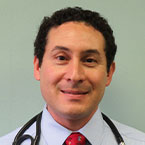By: David Schonfeld, MD, FAAP &
Scott Needle, MD, FAAP
After a hurricane or flood from other causes, families face a variety of challenges. Here are some steps to help you protect and support your children during these times.
Follow advice from authorities about evacuation.
If your community might be hit by a hurricane,
prepare ahead of time. Create a
disaster supplies list, and store extra food, water, and medications. Secure your home (for example, board up windows and put away loose furniture and other items outside the house) to reduce damage from the storm. Remember, some storms are just too dangerous for sheltering in place. Evacuate when public authorities tell you to.
Remember: when in doubt, get out.
Do not go back home home until advised to return.
If possible, do not return until basic utilities are restored. It is hard to take care of children if there is no drinking water or electricity, or when drains and sewage systems are not working. Hospitals, doctors' offices, and pharmacies may be closed, or only able to offer limited services. Grocery stores and restaurants may also be closed.
Make sure your home & neighborhood are safe before bringing children home.
Children and adolescents should not participate in clean-up efforts. It is hard to supervise children, especially young children, while you are repairing or cleaning up your home. Floodwaters can contain hazardous chemicals such as oil, gasoline, and pesticides. The water can be contaminated with sewage and germs which can infect cuts or wounds. Make sure you keep children away from any remaining floodwaters. Follow CDC
tips about how to prevent mold growth and clean up safely. If you still do not have power and need to run a
generator, make sure you keep the generator outside and at least 20 feet from your house.
Check for safety hazards.
Damaged structures and other debris may have sharp edges and points that can injure children and adults. There may be animals or spiders hiding in the debris. Mosquitoes and other insects can breed quickly in standing water and then spread illness. Be careful not to drive your car into floodwaters. Make sure there are no downed electrical wires. Remember that children can also experience over-exposure to
heat, sun, dampness, or
cold if they spend too much time outdoors.
Provide supervision and structure for your children.
Schools and child care facilities may be closed for some time after a storm or flood. Children's usual play areas, such as
playgrounds or parks, may be damaged or unusable. Adults who helped watch your children before may not have returned yet, or they may be busy repairing their own homes. Keep in mind that children do better with
routine and structure. If they are not able to return to school or child care, set routines within the home, such as a regular time for meals and bedtime. Try to limit the amount of time you are separated from your children. When you do have to leave children in someone else's care, be sure to let them know when you will return.
Expect that familiar surroundings may be less familiar.
Damage from storms and floods can destroy buildings, roads and trees. While it is often comforting to be able to return home, some of the nearby damage can be upsetting to children and adults. Friends, neighbors, favorite restaurants, and businesses may not be back or open. Some people may decide not to return. Some facilities may not reopen. You and your children may experience loss and change for weeks and months afterwards.
Talk to your children about what's happening and how they are feeling.
Choosing
not to talk about what has happened makes the event even more frightening for children. Silence suggests that what happened is too horrible to speak about. Children may feel it is not okay to ask questions or talk about their reactions. Start by asking your children what they have already heard about the events. Ask them how they feel about what is happening and whether they have any fears or concerns. Correct any misinformation. Provide appropriate but honest reassurance. Remind children of the steps being taken to keep them safe and rebuild the community.
Explain in simple, direct language what has happened and what you expect to happen.
The amount of information that will be helpful to children depends on their age, developmental level, and typical coping style. In general, older children want, and will benefit from, more detailed information than younger children. Take cues from your children as to how much information to provide. For children of all ages, do not provide too many details or share graphic images or emotional coverage (such as interviews with crying victims on news from television or online sources).
Limit media exposure, including television, radio, print, and social media.
This is especially important for younger children, but it is important for adults, too. After a disaster is a good time for everyone to unplug and spend time together with friends and family. If children are exposed to
media, view it with them and offer reassuring explanations and answer any questions.
Ask children what questions, feelings, worries, and concerns they may have (but don't force the issue).
Do not tell children they shouldn't be worried. Help them learn how to deal with distressing feelings rather than pretend that these feelings do not or should not exist.
Continue to ask questions and offer to talk with your children, but do not force them to respond. Generally, it is best to wait until children accept the invitation to talk. Stay present physically and emotionally so children know you are ready to talk when they are. If you are worried about your children's safety or well-being, reach out to your pediatrician or another professional and ask them to speak with your children.
Look for changes in behavior that suggest your child is having difficulty coping.
It is common for children to experience changes in sleep (difficulty falling or staying asleep, nightmares, trouble waking in the morning) or eating (such as decreased appetite or over-eating). They may struggle with fears or anxiety (including a fear of returning to school), social withdrawal, sadness or depression, new hyperactivity, substance use (alcohol, tobacco, or other drugs) or physical complaints (such as headache, stomachache or feeling tired).
In addition, future severe weather (or anniversaries of the event) may remind children of the disaster, which can increase feelings of distress. If these reactions continue over time, become severe, or affect your children's ability to learn and socialize, contact your pediatrician or another professional. Most children who are experiencing distress, though, may not appear upset or show any change in behavior.
Consider sharing your feelings about the disaster with your children.
This is an opportunity for you to role model how to cope with distress and disappointment. Share coping strategies that work for you. You might describe talking to friends or family, writing your thoughts in a journal, or using art or music to express your feelings. Some people use exercise, dance, yoga, or relaxation techniques and
mindfulness to cope with strong emotions.
Monitor how you are doing and take care of yourself.
Children depend on the adults around them to be and feel safe and secure. If you are anxious or angry, children are likely to be more affected by your emotional state or actions than by your words.
Help children grieve if they have experienced the death of someone close.
You can
download a free booklet with advice for parents and other caring adults on how to support grieving children. Children also
grieve other losses, such as the loss of their home, missing a friend who moved away, or being unable to return to school.
Help children figure out how they can help others in ways they find meaningful.
Helping others can decrease a child's sense of helplessness and powerlessness.
Recognize that recovery takes time.
Cleaning and rebuilding a home after flooding can take months or more. It often takes even longer for children and families to adjust. Expect that there will be ups and downs, celebrations, and setbacks along the way. The character of the community often changes from what it was before the disaster.
Contact your child's pediatrician and school.
If you have concerns about your children's health, adjustment, or behavior, reach out to their pediatrician and teachers. Concentration and learning are often difficult after a disaster. Make sure that children receive appropriate support and accommodations at school. If school expectations exceed children's current ability to learn, school can become a source of distress rather than support and assistance. Talk with your children's teacher or a school mental health professional about how to get support.
More information
This material is supported by the Centers for Disease Control and Prevention of the US Department of Health and Human Services through cooperative agreement number 5 NU38OT000282-03-00. The CDC is an agency within the US Department of Health and Human Services (HHS). The contents of this program do not necessarily represent the policies of the AAP, CDC or HHS and should not be considered an endorsement by the Federal Government.
About Dr. Schonfeld

David Schonfeld, MD, FAAP, is an Executive Committee member of the American Academy of Pediatrics Council on Children and Disasters and a member of the Section on Developmental and Behavioral Pediatrics. He also serves as Director of the National Center for School Crisis and Bereavement at Children’s Hospital Los Angeles, and Professor of Clinical Pediatrics, Keck School of Medicine of USC.
About Dr. Needle
 Scott Needle, MD, FAAP, is a primary care pediatrician who is the chief medical officer for Elica Health Centers in Sacramento, California. He served as the former chairperson for the federal National Advisory Committee for Children and Disasters, and is currently a member of the executive committee of the AAP Council on Children and Disasters. Dr Needle has produced numerous AAP handouts and educational presentations and is the lead author for the AAP policy,
Ensuring the Health of Children in Disasters. Scott Needle, MD, FAAP, is a primary care pediatrician who is the chief medical officer for Elica Health Centers in Sacramento, California. He served as the former chairperson for the federal National Advisory Committee for Children and Disasters, and is currently a member of the executive committee of the AAP Council on Children and Disasters. Dr Needle has produced numerous AAP handouts and educational presentations and is the lead author for the AAP policy,
Ensuring the Health of Children in Disasters. |